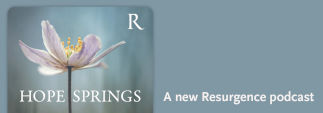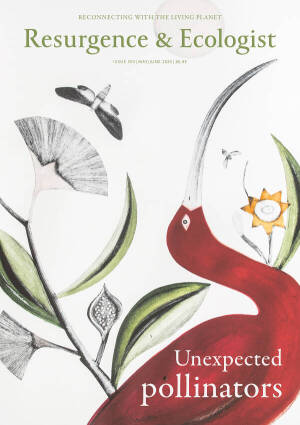Early in 2007, keen to travel after university, I was stumbling around on the internet when I came across Los Cedros Biological Reserve, high in the cloud forests of northern Ecuador. The website appeared to have been cobbled together in an afternoon. They were looking for little more than a willingness to work and, on impulse, I sent an email. A few weeks later I found myself on a mule, trekking six hours up into the forest where I would spend the next two months under the tutelage of the magnificent Josef DeCoux.
Josef had drifted south from the US in the eighties and wound up in these woods. He was in perpetual battle with the loggers and miners who intended to convert the cloud forest into cash, sustained by only his passion, his volunteers, and rum. The mood was a little Heart of Darkness (Joseph Conrad, 1899), and Los Cedros was as unique as DeCoux. It was a wonder – lush and loaded with life. It was home to orchids and frogs found nowhere else on the planet, and my job was to guide the biologists who came to study them. One day, a friend was bitten by a snake – a story that would require this entire review to do it justice. Suffice to say, my time there was formative. It showed me how the world could be.
So imagine my surprise to open Is a River Alive? and see its dedication to DeCoux. The first third of Macfarlane’s book is taken up with his own formative journey into Los Cedros. In 2008 Ecuador enshrined the Rights of Nature into its constitution, on the initiative of many of the country’s Indigenous groups. Subsequently, DeCoux brought a case against the mining companies who were surveying in the forest. In 2021, in an unprecedented ruling, Ecuador’s Constitutional Court found that mining would violate Los Cedros’s right to exist: the rights of its animals, its forests, its rivers. Nature had value unto itself, not just in what it was to us. Barrister Monica Feria-Tinta described the decision to be as significant as the publication of the Universal Declaration of Human Rights in 1948. This pocket of pristine forest may just be responsible for reshaping humanity’s relation to the planet.
From Ecuador, Macfarlane heads to Chennai in southern India, a city raised on three rivers – the Adyar, the Cooum and the Kosasthalaiyar. Each is now comprehensively poisoned, thick with effluent. If rivers can be alive then these are dead, or nearly. He travels the length of the Adyar with Yuvan Aves, one of many dedicated young people refusing to accept such death, and fighting on all fronts: in courts, in schools, in reviving marshlands, and in saving sea turtles, one egg at a time. Despair, Macfarlane reminds us, is a privilege. There is much to be learned from a mindset such as Yuvan’s – a determination as resolute as a river’s urgency for the sea.
The book’s final third concerns a kayak trip down the Mutehekau Shipu in Quebec, a wild, free-flowing river nearly 300km long, which electricity company Hydro-Québec now has in its sights. Sacred to the Innu First Nation, the Mutehekau Shipu was declared a legal person in 2021 – the first river in Canada to receive such status. Yet the river’s freedom is still not assured – nothing, it seems, ever is. As Macfarlane descends the untamed water through this intact place, its alternative future, a placid lake backing up behind a dam, is impossible to ignore. Immersed in his environment, in a tiny boat in this huge landscape, the river emerges for him as a fully formed character, animating the land through which it flows. Seen through Macfarlane’s eyes, it could not be clearer how violent such a loss would be, not just to us but to all to whom it gives life, and ultimately to the river itself.
Everything you would expect from Macfarlane’s work is here: the precise, vivid language; the deep engagement in place; his ongoing interrogation of how to translate place into text. But there is something more urgent too, as he gives voice and expression to a radical idea. A meaningful Rights of Nature would overhaul how we thought about our place upon the planet. It would force the question: if a river was truly alive, then how would we listen to what it wants? This is what Nature writing should be for.
I have rarely delved into a book’s Acknowledgements as part of a review, but stretching to 11 pages of small font, plus three additional pages of photos, those that conclude Is a River Alive? make up a significant chunk of the text. It would be wrong to overlook them, because they speak to so much of what this book is about. Some of Macfarlane’s early work received criticism for using place as a backdrop to personal exploration, overlooking the people culturally and politically entangled with those places. It is not an accusation that could be made of this book, which credits both the local people that he journeys with and the rivers themselves as co-authors of the text. The whole book is about entanglements, rich in collaboration with both human and more-than-human worlds, and as such it is his most political and important work to date.
In the first pages, Macfarlane describes his young son, Will, asking him what his new book is about. When he learns the title, Will shoots back that it’s going to be a short book then, because the answer is quite clearly yes. It can take adults a long time to see what is evident to children. But by the time I left Macfarlane, where the Mutehekau Shipu meets the sea, I felt able to answer the title’s question just as definitively. It will be interesting to see what conversations the book sets in motion – this is a vision of the world that is desperately needed, a question that is now screaming to be answered.
Is a River Alive? by Robert Macfarlane. Hamish Hamilton, 2025. ISBN: 9780241624814






